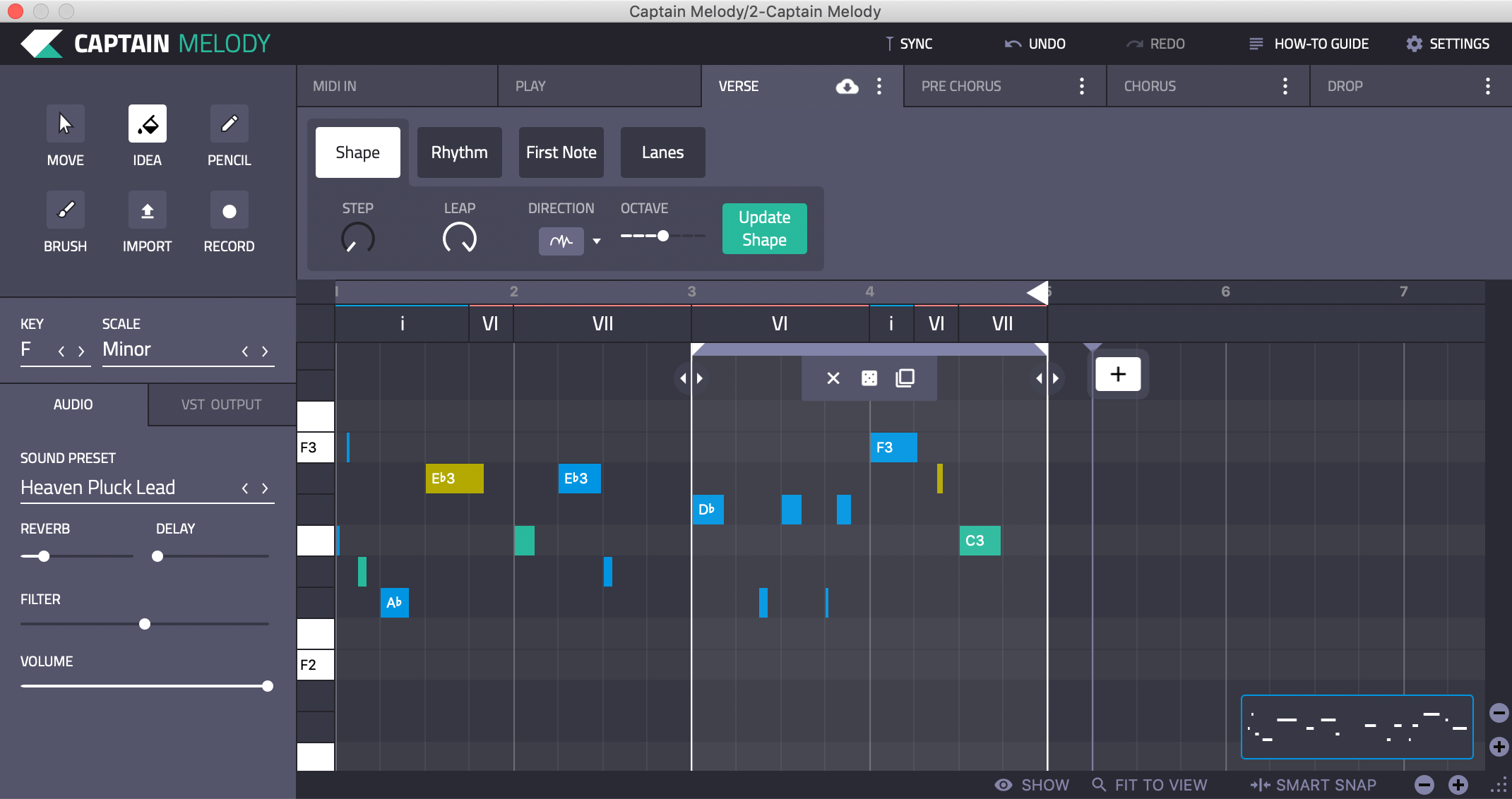How To Write A Melody

Above all, the most important element in making music memorable and catchy is the melody. As such, this sequence of notes, created from pitch and rhythm, is the tune we as listeners tend to remember.
Firstly, before creating a melody from scratch, let’s listen to a couple of famous melodies from the modern era.
Depeche Mode – Enjoy The Silence
Ayla – Ayla (DJ Taucher Mix)
Captain Melody 5.0
- Write melodies that suit your chord progression
- Connect the Melody plugin with Chords plugin
- Apply different rhythms
- Apply arpeggiators that move your MIDI notes
- Adjust the tension between the Chords and Melody
- Hear the melody played with 100+ different sounds
The melodies in these examples are quite obvious, as a result of being played by instruments. All mainstream music contains a melody. However, these melodies are often performed by a vocalist, rather than an instrument.
For example, the chorus melody of the Bee Gees’ hit record Stayin’ Alive is composed almost purely of vocals. The melodic instrumental element – an electric guitar – plays after the chorus.
It could be argued that the guitar is also playing a melody. However, the guitar could also be considered to be playing a motif. This is due to its short and repetitive nature. Additionally, it would also be correct to consider the guitar a countermelody, or similarly, a secondary melody to the main vocal melody.
As vocalists hit notes, similar to other instruments. It’s possible to take a vocal melody and replicate it using a non-human instrument.
Here’s what the chorus of Stayin’ Alive sounds like when played on a piano rather than by a vocalist:
Basic Tips
Let’s look at how we can create a melody using these basic tips.
- Working with a vocalist
It’s worth finding out if they have a preferred key in which they like to sing, as a result, it prevents having to transpose the music later in the writing process.
- Lay down some chords
Chords are super-important to any song. For instance, if you have a chord progression already in place, writing a melody to match will be much easier.
- Find the key and scale
By knowing the key and scale, you can identify which notes you can use for the melody. For example, if you are writing in E Major you can use the notes E, F♯, G♯, A, B, C♯, and D♯.
- Play and record
As a result of auditioning your ideas and recording them, you can take the best parts and edit them together.
Advanced Tips
Now try writing a melody using these advanced techniques.
- Repeat with variations
Create short motifs, repeat them and add variations to maintain interest.
- Use call and response
Call and response, or similarly, question and answer, is achieved by creating two musical phrases separated with the latter phrase appearing to respond to the first.
- Select the best timbre
Not all instrument sounds will work well for a melody. Stick to sounds which can cut through the mix and will compliment the other instruments.
- Use a higher octave
If, for example, the other instruments in the arrangement are dominating the 3rd octave, try playing the melody on the 4th Octave. This helps separate the the instruments and allows the melody to be heard more clearly.
- Use Stepwise or Melodic Motion
Limit the interval between consecutive notes to an adjacent note in the scale. For example, only using occasional jumps – which are more than one note – helps to create a more natural melody. This is also beneficial if the melody is to be sung.
Let Us Demonstrate
A short video demonstration, showing how to create a melody using Captain Chords and Captain Melody.
And another more detailed example. This time using more instruments.
It’s super easy to create your own ideas from scratch. Visit the official Captain Melody homepage and see how it will help you explore music and write your own original productions.
